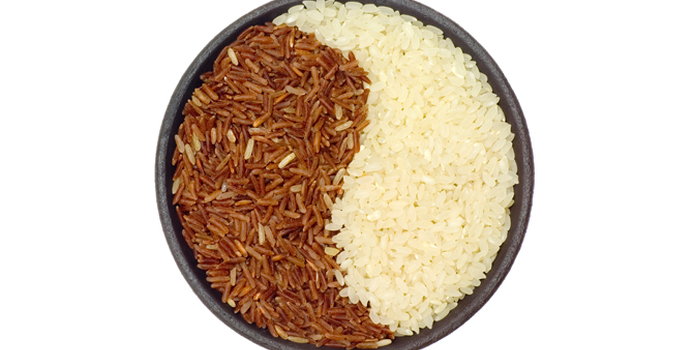Brown rice is one of the healthiest cereal grains for more the half the world's population. White rice has most of its outer layers removed. This strips it of most of its nutritional value. The brown variety retains most of its layers, which makes it more wholesome in nutritional content. It is an excellent source of magnesium, selenium and manganese. The cereal is also a rich source of dietary fiber, which has proved highly beneficial to overall health.
Magnesium
A cup of brown rice provides 265 mg of magnesium. This mineral facilitates the activities of more than 300 enzymes in the body. These enzymes include those involved in the secretion of glucose and insulin. Studies have shown a lower risk of type 2 diabetes for individuals who consume high amounts of magnesium-rich whole grain foods. Magnesium is also beneficial for heart health. It helps to regulate blood pressure. This reduces the risk of stroke and heart disease. Magnesium balances the effects of calcium on nerves and muscles. This helps to relax nerves and muscles. Inadequate magnesium in the diet allows calcium free entry into nerve cells. They become over-activated and cause excessive contractions. This results in muscle cramps, high blood pressure, migraine headaches and fatigue. Our bones contain two-thirds of the body's magnesium reserves. Magnesium together with calcium promotes healthy bones. It also helps to give proper structure to bones.
Selenium
Brown rice is rich in selenium, which reduces the likelihood of colon cancer. A cup of the grain provides about 45 mg of selenium. This is 27 percent of the daily value. This mineral has proved helpful in the fight against colon cancer. The grain is also a rich source of fiber. Good amounts of fiber in the diet accelerate the transit of carcinogens in the gastrointestinal tract. Colon cells are exposed for a shorter time to these toxins. It reduces the likelihood of colon cancer. Selenium plays a vital role in metabolism, hormonal, antioxidant and immune functions. The mineral initiates DNA repair in damaged cells. It also inhibits proliferation of cancerous cells and induces their death. Selenium works together with vitamin E, which is a powerful antioxidant. Together, they undertake vital antioxidant functions throughout the body. This reduces the risk of heart disease and various cancers. It also reduces inflammation in cases of rheumatoid arthritis.
Fiber
Diets with inadequate roughage have negative impacts on our health. Fiber helps to reduce high cholesterol levels. This prevents the buildup of plaque in the arteries and improves cardiovascular health. It also lowers the risk of heart disease. Fiber has been found helpful in the management of diabetes, by regulating blood sugar levels. Roughage helps to rid the digestive tract of carcinogens. This provides more protection for cells and minimizes the risk of colon cancer. Studies have shown that whole grains such as brown rice in the diet can reduce the risk of breast cancer for pre-menopausal women. Roughage also makes stools heavier, which enables easier passage from the gut. This helps to prevent constipation. Brown rice is also rich in insoluble fiber, which helps to prevent gallstones in women.



